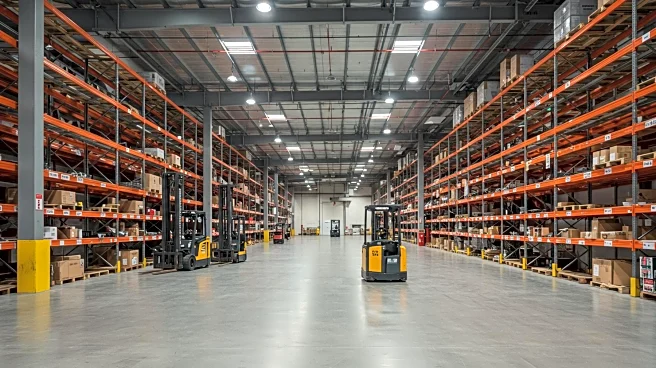What's Happening?
The U.S. industrial market has experienced its first quarter of negative net absorption since 2009, with occupiers vacating 1.3 million square feet more than they leased. This shift is attributed to companies reassessing their space needs and consolidating or restructuring to preserve margins. The industrial construction sector has contracted for the 11th consecutive quarter, with 282.4 million square feet under construction, marking the lowest level since 2018. Corporate bankruptcies have reached their highest levels since 2010, contributing to significant warehouse vacancies, particularly in California and Ohio. Despite these challenges, consumer spending has increased, driving demand from e-commerce and major retailers.
Why It's Important?
The negative net absorption in the industrial sector signals potential economic challenges, as companies reduce staffing and face corporate bankruptcies. This trend could impact the U.S. economy by slowing industrial growth and affecting employment in related sectors. However, increased consumer spending and demand from e-commerce may provide some relief, potentially stabilizing the market. The fluctuating tariff rates and international trade agreements also add uncertainty, influencing business decisions and economic forecasts.
What's Next?
As companies continue to reassess their space needs, the industrial market may see further consolidation and restructuring. The impact of President Trump's tariff policies and international trade negotiations will likely play a significant role in shaping future market dynamics. Stakeholders, including businesses and policymakers, will need to monitor these developments closely to adapt strategies and mitigate potential risks.
Beyond the Headlines
The shift in industrial net absorption highlights broader economic trends, including the impact of corporate bankruptcies and changing consumer habits. The contraction in industrial construction and staffing reductions may have long-term implications for the U.S. economy, affecting job markets and regional development. The role of e-commerce and technological advancements in driving demand could reshape the industrial landscape, necessitating new approaches to space utilization and business operations.












